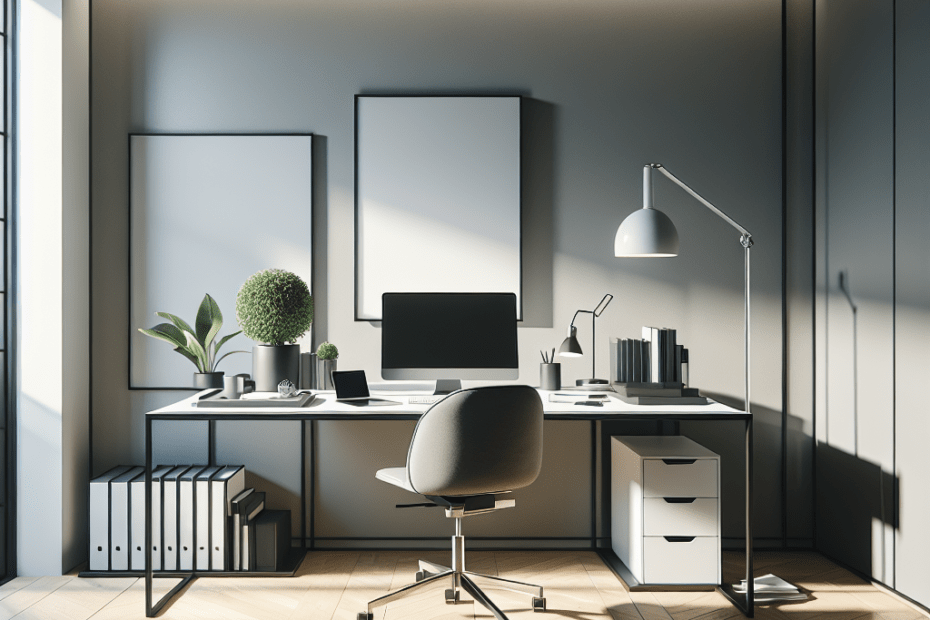“`html
How to Achieve a Minimalist Workspace at Home
In today’s rapidly changing work environment, many people are embracing the concept of a minimalist workspace design. They seek simplicity and functionality, aiming to maximize productivity and minimize distractions at home. The minimalist workspace design trend is not just about aesthetics but also about creating a serene and efficient work atmosphere.
According to a survey conducted by Statista, 34% of Americans found that a cluttered workspace at home negatively impacts their productivity. This statistic underscores the rising importance of adopting minimalist principles in the design of home workstations.
Key Components of a Minimalist Workspace
Achieving a minimalist workspace involves several key elements that focus on reducing excess and enhancing focus. They include decluttering, choosing multifunctional furniture, and incorporating neutral color schemes. These elements collectively contribute to creating a calm oasis in a bustling household.
1. Declutter and Simplify
One of the primary steps towards a minimalist design is decluttering. They should evaluate every item in their workspace, keeping only the essentials that serve a purpose. Non-essential items can be stored away from the desk space or donated if they are unlikely to be used again.
- Remove unnecessary items that do not aid in daily tasks.
- Implement storage solutions like wall shelves and organizers to keep surfaces clean.
2. Choose Functional and Multipurpose Furniture
A minimalist desk or chair should ideally be sleek yet ergonomic. They might opt for pieces that can perform multiple functions, such as a convertible desk that can also serve as storage. This reduces the need for additional furniture and consequently, clutter.
| Furniture Item | Functionality |
|---|---|
| Convertible Desk | Workspace & Storage |
| Foldable Chair | Seating & Easy Storage |
| Wall Shelves | Storage & Display |
3. Incorporate Neutral and Calming Colors
Using a palette of neutral colors like whites, grays, or light pastels can make a space feel larger and more serene. They should integrate these tones on walls, furniture, and accessories to create a coherent and calming environment that encourages focus.
4. Utilize Natural Light
Proper lighting is crucial in a minimalist workspace design. They should aim to position their desk near a window to capitalize on natural light, which is less straining on the eyes and enhances focus. If natural light isn’t available, opting for soft and adjustable LED lighting can mimic the same effect.
The Benefits of a Minimalist Workspace
- Increased Productivity: By eliminating clutter, they can focus better on tasks at hand, thus enhancing overall productivity.
- Enhanced Creativity: A simple, distraction-free environment can foster creativity and innovation.
- Stress Reduction: A clean, organized space can reduce stress levels and promote a sense of calm and control.
A minimalist workspace not only cultivates a productive work mindset but also reflects positively on mental well-being. According to a study by Psychology Today, cluttered environments can trigger stress responses and hinder creativity.
Key Takeaways
- A minimalist workspace design is about function, aesthetics, and creating a balanced work environment.
- Adopting minimalism involves decluttering, choosing functional furniture, and employing neutral colors.
- Natural light and an organized layout enhance focus and productivity, creating a serene working atmosphere.
FAQ
1. Why is a minimalist workspace design beneficial?
A minimalist workspace reduces distractions, enhances productivity, increases creativity, and decreases stress levels, all of which are beneficial for both work and personal well-being.
2. What is a simple first step towards minimalist workspace design?
A simple first step is decluttering the current workspace. They can start by removing non-essential items and ensure every item kept serves a specific purpose.
3. How can natural light enhance a minimalist workspace?
Natural light reduces eye strain, improves mood, and creates an inviting workspace atmosphere conducive to better focus and longer work periods.
4. What furniture considerations should they make for minimalist design?
Choosing functional, multipurpose furniture that serves several functions can reduce clutter and provide more workspace flexibility.
5. How do neutral colors affect workspace productivity?
Neutral colors create a calming environment, which can reduce stress levels and foster sustained focus and productivity.
“`
